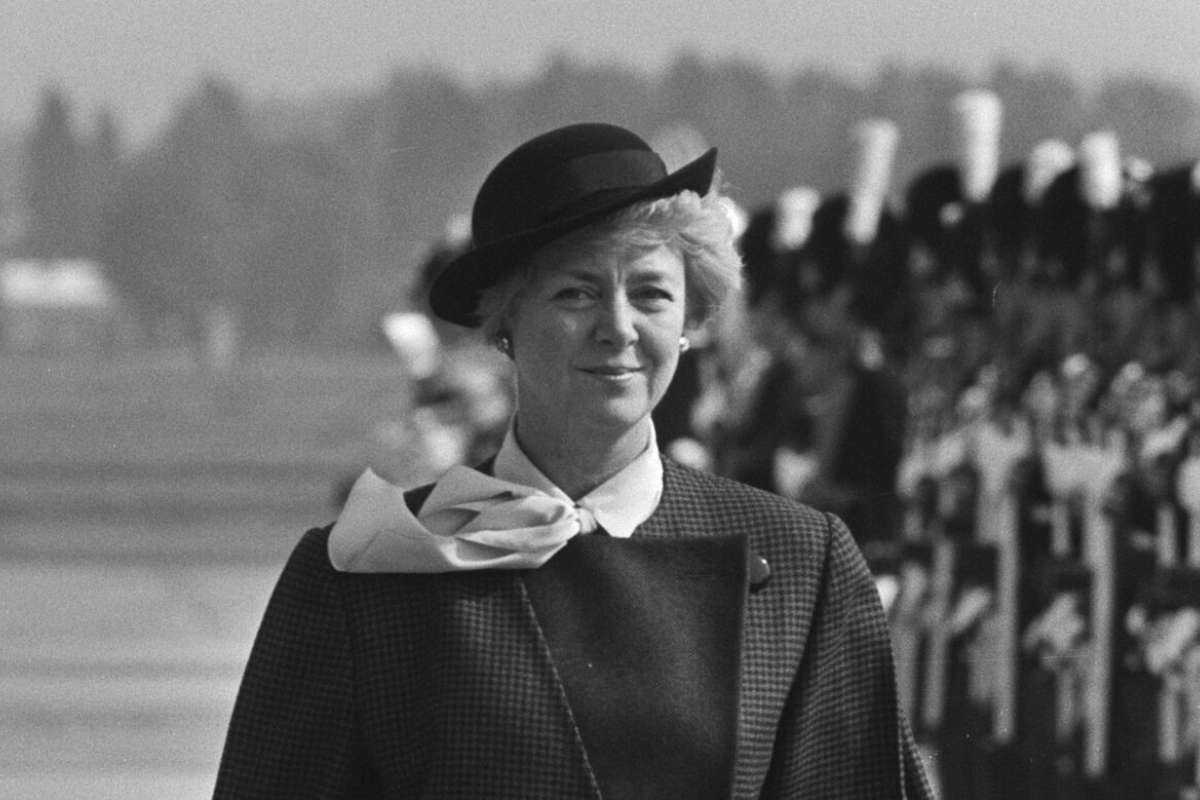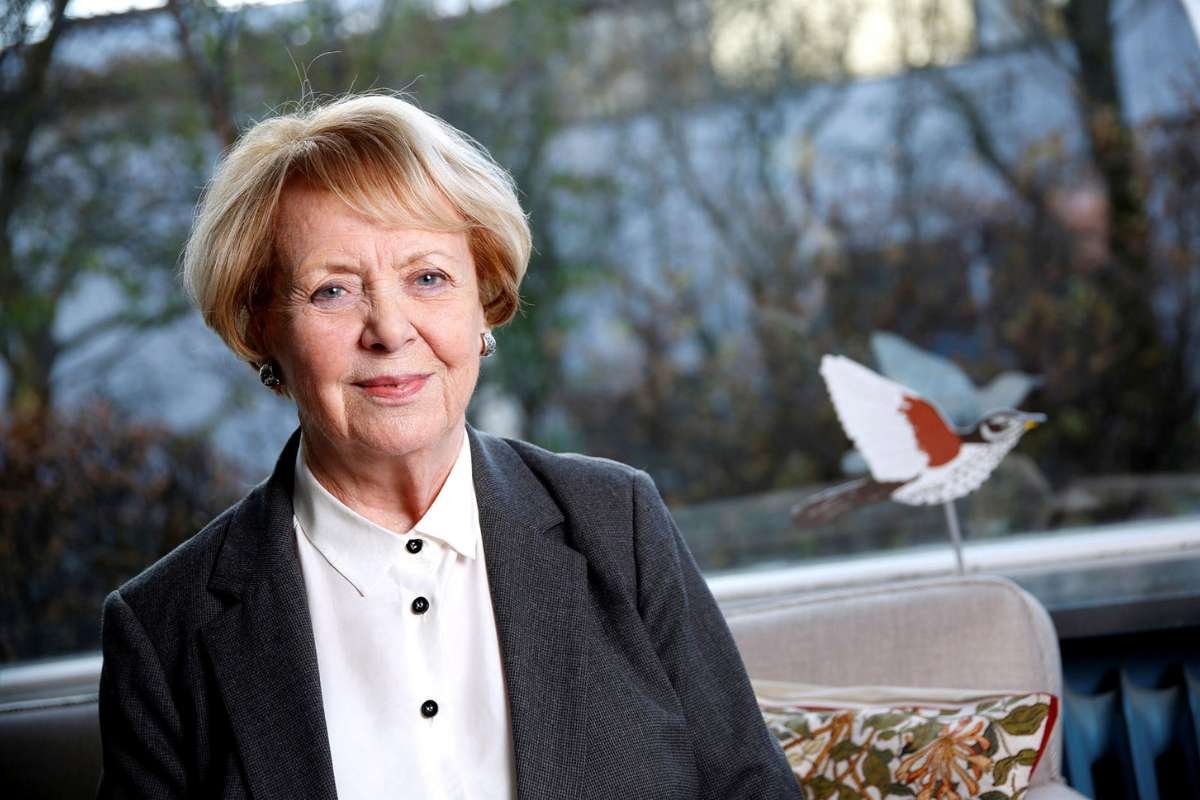Throughout history, women have risen in the role of leadership, especially in politics which is dominated by men.
Throughout history, women have steadily risen to leadership roles in politics, a domain traditionally dominated by men. This shift has not been without challenges, but each step forward has broken barriers and paved the way for future generations. One of the most notable milestones in this journey was the election of Vigdís Finnbogadóttir, the first woman president in the world and the first democratically elected female president. Her leadership in Iceland marked a turning point in global politics, setting an example for women seeking political power across the globe. Let’s go through her journey of becoming the first woman president in the world and how she inspired other women around the globe.
Vigdís Finnbogadóttir: The First Woman President in the World
I look for positive leadership – something creative, that inspires, with ideas that can be applied for good ~Vigdís Finnbogadóttir.
Background

Vigdís Finnbogadóttir, born on April 15, 1930, in Reykjavik, Iceland, grew up in a family that valued education and culture. Her father was a civil engineer, and her mother was a nurse, fostering her strong national pride and cultural awareness. She studied French literature in France and Denmark, later teaching and working in the arts, including the Reykjavik Theatre Company, which laid the groundwork for her future leadership and commitment to education and cultural preservation.
Gender Equality is a question of education because no society can live without women’s intelligence. ~Vigdís Finnbogadóttir
Election and Historical Significance
In 1980, Vigdís Finnbogadóttir became the world’s first democratically elected female president, marking a significant milestone for Iceland and women’s rights globally. Her victory symbolized a shift in perceptions of women in leadership, demonstrating that women could govern nations effectively. Vigdís’s election inspired women worldwide to pursue political participation, breaking barriers and encouraging a more inclusive approach to leadership in various spheres of society.
Achievements During Her Presidency
Vigdís Finnbogadóttir served as Iceland’s president from 1980 to 1996, championing environmental conservation, cultural protection, women’s rights, and educational advancement. She actively promoted sustainable development and international cooperation on environmental issues, setting a precedent for other nations. Vigdís also advocated for greater female representation in politics and education, implementing policies to enhance educational standards and ensure a brighter future for Iceland’s next generations.
Challenges Faced as the First Woman President

Being the first woman president in the world imposed quite severe challenges. Vigdís had to confront very deep-rooted patriarchal structures that were rather averse to the idea of female leadership. Even though Iceland was more progressive than many other nations, she also found societal skepticism and political resistance there. Many of them doubted that a woman could be a leader of a country simply because of her gender.
Notwithstanding all this, Vigdís took an exemplary stand by her people; the eventual display of good leadership with diplomacy proved many of her detractors wrong. Her position allowed her to surpass all of these hurdles; her presidency was strengthened, and she became an example for generations of women who would lead their people facing similar ‘tests’.
It saddens me to think of all the potential that remains unrealized as long as women play a less than fully active part in our societies. Motivation to change this situation must be inspired in men and women alike. ~Vigdís Finnbogadóttir (Context of this quote – Vigdís Finnbogadóttir speaking in PACE 1993. Here. )
Legacy and Global Influence
Vigdís Finnbogadóttir’s legacy stays alive in Iceland and internationally. She proved that through her governance, future generations of women would be able to show the world that indeed, political leadership was not an exclusively male domain. The whole world looked up to her as a pioneer, and her influence went even beyond her time in office. Her influence regarding women’s rights, protection of the environment, and education is still felt, with her legacy an inspiration for lots of women aspiring for places in politics and other endeavors.
Women in Power: Comparing First Female Presidents Across Continents
While Vigdís was the first woman president in the world to be democratically elected, other women around the globe have also risen to power under varying circumstances. Their journeys, challenges, and triumphs provide valuable insights into the evolving role of women in politics.

1. Isabel Perón (Argentina, 1974–1976)
- Ascension to Power: Isabel Perón became the first female president in 1974, succeeding her husband without an election.
- Challenging Presidency: She navigated political turmoil, economic instability, and social unrest during her leadership.
- Historical Significance: Isabel Perón’s presidency highlights women’s potential for leadership despite challenges.
2. Corazon Aquino (Philippines, 1986–1992)
- Leadership during Political Upheaval: Corazon Aquino led the People Power movement, ousting Ferdinand Marcos.
- Restoration of Democracy: Aquino worked to restore democracy in the Philippines after the dictatorship.
- Overcoming Challenges: Aquino overcame skepticism, uniting a divided nation through resilience, akin to Vigdís Finnbogadóttir’s leadership.
3. Ellen Johnson Sirleaf (Liberia, 2006–2018)
- Historic Leadership: Ellen Johnson Sirleaf made history as Africa’s first female president, serving Liberia from 2006 to 2018, during a time of significant national recovery after the civil war.
- Rebuilding and Reforms: She focused on the economy, infrastructure, anti-corruption, and women’s empowerment, boosting Liberia’s reputation.
- Inspiration for Women: Sirleaf and Finnbogadóttir showed women can succeed in tough politics.
Unique Challenges Faced by First Female Presidents
All the above female presidents had to deal with specific unique challenges that came their way, thanks to the patriarchal setting of their respective countries. Vigdís Finnbogadóttir had to revolt against the long-standing conventional, patriarchal powers of Iceland, while Ellen Johnson Sirleaf had to take up the challenge of rebuilding a war-ravaged country. For Corazon Aquino, this meant dealing with the aftermath of a dictatorship and re-restoring democracy. All these women underwent political resistance, social skepticism, and extreme pressure but still managed to succeed where a lot of people thought they would fail.
Conclusion: A Legacy of Women in Power
Vigdís Finnbogadóttir became the world’s first woman president in the world and joined such pioneers as Corazon Aquino and Ellen Johnson Sirleaf in their efforts to change the face of politics for women. Their legacies keep on inspiring and act as models for women aspiring to leadership positions. As we look ahead, the efforts of these outstanding women will continue to resound with the decisions taken in the halls of power throughout the world, insisting that leadership has no gender.
Frequently Asked Questions:
Is the first female president in the world Isabel Perón?
Isabel Perón served as president from 1974 to 1976 but she was not elected for the position.
How long did Vigdís Finnbogadóttir serve as president?
Vigdís Finnbogadóttir served as the president of Iceland for 16 years, from 1980 to 1996.
How was Vigdís Finnbogadóttir elected as president?
Vigdís was elected through a democratic election in Iceland in 1980.
Were there any other notable female presidents after Vigdís Finnbogadóttir?
Yes, many women have since followed in her footsteps. Some of them are Corazon Aquino, Michelle Bachelet, and Ellen Johnson Sirleaf etc.
Is Vigdís Finnbogadóttir still active in public life?
Vigdís has retired from politics in 1996, but she remains active in cultural and educational causes.









